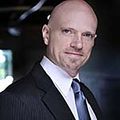“Flex! Flex! Flex!” the kids called out over and over. They got off the bus all excited because Rosanna was there to pick up her grandchild from the bus stop. All the kids wanted to see Rosanna flex her arm muscles. Rosanna is a 67-year-old dynamo. Clearly, she’s been a topic of conversation among the kids.
A little less than a decade ago, Rosanna began actively pursuing health and wellness. She had no lifetime habit or pattern of fitness already established, so she’s not some outlier who has had fitness as a top priority for her entire life. She’s thrilled about how her tennis and exercise efforts make her feel and the gratifying experience of seeing herself improve day-by-day, week-by-week.
And this is what life comes down to: A series of small opportunities to make a choice each day that either moves you closer to health or further from it.
You can thrive or you can simply survive. Are you just getting by or getting better? I hope you will make the most of your days rather than just get through them.
These small, daily choices will affect you at all ages and stages of life, but the older you get, the consequence of the choices you have made are magnified.
Not as Big as it Looks
Fitness can look long, complicated, tedious and, for some, seemingly impossible to achieve. Fitness—and the lack of it—is the result of multiple small daily choices made over time. Every choice is a chance to move one step closer to thriving. Fitness is the ideal, so many people put a focus on health, which is more of a form of general wellness and may seem easier to achieve. But health is a funny thing—when we are young and healthy, we neither notice it nor think much about it.
However, health brings a freedom that few people realize until they no longer have it. I read a quote somewhere that goes something like this: “A healthy person has 1,000 dreams. The unhealthy person has one.” There is much wisdom in this. If you are healthy, you have a myriad of things you are doing and planning to do. When you talk to an unhealthy person, you most often hear only about what’s wrong with their health.
A lack of vitality has a narrowing effect on your perspective. It makes life seem less hopeful and less full of opportunity to experience the things we value.
Slowing Down the Aging Clock
Imagine you are a caveman or cavewoman in a tribe of 20 people. Resources are scarce at times and survival is the highest priority. As such, it is important that more resources go to children and adults of reproductive age. Over time, this scenario has been built into our DNA on a deep level. There are triggers in our bodies that start the process of winding down toward the end of life. You can, however, fool that system a little bit.
If you remain physically active, you are still contributing to the resources of the tribe (through building shelter, hunting, gathering, etc.) Your body doesn’t know you live in modern times. If you’re moving a lot and in challenging enough ways, you’re still doing your part to contribute, so your body maintains itself more effectively and for longer.
How We Weaken With Age
Weakness with aging comes from deterioration of myelin around muscle and a lower number of motor nerves, but vigorous exercise counteracts this process. The myelin is like insulation around electrical wires, and your motor nerves are those electrical wires. The signals sent on those wires are how your brain makes your muscles move and apply the right amount of force to do whatever you are asking it to.
For the brain itself, reactive, coordinated physical activity does far more to promote brain health than “traditional” exercise, which is controlled, discrete movements like pedaling on a stationary bike. All exercise enhances brain health, but the right type of exercise protects the brain from future damage and enhances its function now. Running outdoors, catching a ball, interactive, partner-based workouts, playing a sport—even at a leisurely pace—are all more reactive and unpredictable, which enhances the brain benefits of physical activity.
Eye of the Tiger…or Alley Cat
Here’s the best part: You can shift to thriving rather than just surviving today—right now. Your body and brain change based on what you do, big and small, moment to moment, and that adds up to significant change over time.
Direct the “eye of the tiger” toward your health choices and you’ll thrive. Use the “eye of the alley cat” and you’ll just get by and survive. Keep your “eye of the tiger” alive by making small choices each day related to your nutrition and physical activity that nudge you closer to health and fitness. You just might end up with a group of schoolkids chanting “Flex! Flex! Flex!” to you when you’re 67 years old.
Get better or just get by. Survive or thrive. The next opportunity to choose is coming soon.




 by
by 



 by
by